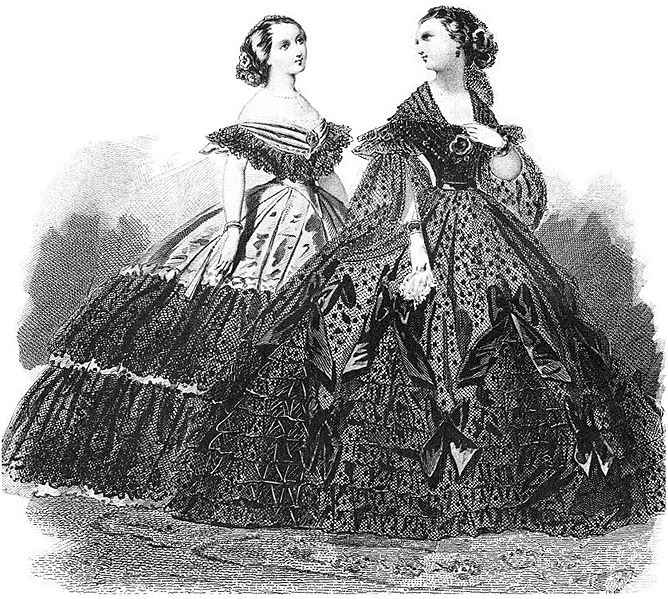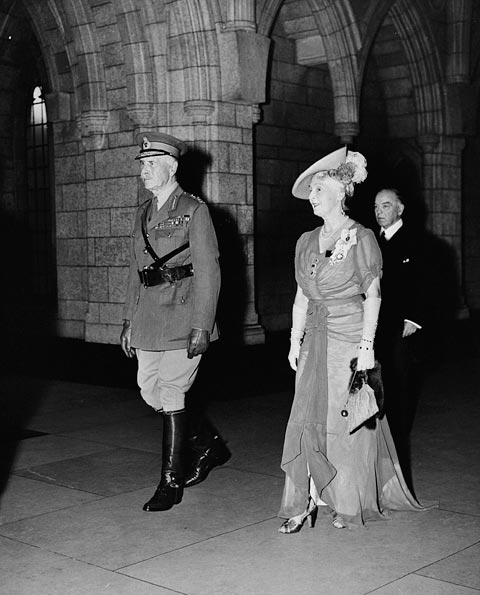Gone With the Wind was published 70 years after the Civil War ended, and introduced countless new generations to this bloody conflict in the United states. It was written in 1936 and became the biggest film ever made just three short years later. And even though it was written about a woman who lived way, way back in the 1860s, it helped to shape 1940s fashion and created one of the most famous fiction style icons of all time: Scarlett O'Hara.
Belle in a Bell Skirt
Long-time readers of the blog know that Gone With the Wind is my favorite book and my favorite film, and if you've read and seen it then you probably know why. Many, many people cite the novel and the film as their favorites, and many women admire the central heroine (or anti-heroine, depending on your view): Scarlett O'Hara.
Fashion plays a big part in the book. It's about living through a war, which is no easy time. In the south during the 1860s, it was particularly rough. There are many passages describing Scarlett's attire. She goes from wearing sprigged muslin and gowns with carefully-sewn pearls adorning them to being without a proper bonnet or even a petticoat under her dress. She lives without stockings and hoops and all those many mysterious items that were so essential in those days when skirts had to be several feet wide and brush the floor or you just weren't decent.
But the fashion of the book didn't come alive until it hit the silver screen in full, glorious Technicolor. Vivien Leigh, playing Scarlett, was bedecked with yards of fabric, acres of jewelry and a wire hoop cage that was (blessedly) much lighter than the real deal would have been back in the day. And though she was already an aged heroine by contemporary 1940s film-goers, Scarlett's fashion leapt from the screen and into the closets of women all over America.
After it was brought to the big screen in 1939, Gone With the Wind immediately became the most popular film of the day and of all time. It is still the highest-grossing movie ever made, if you factor in ticket price differences between then and now. Clothiers of all types took notice.
The most popular pattern of the early 1940s mirrored the green and white dress Scarlett wears to the barbeque at Twelve Oaks. Many women also flocked to the dress shop to get a pattern for a white, ruffled gown with the long skirt, an item that mirrored the red-belted dress Scarlett wears in the opening scene of the flick. And the slim, cut silk wedding gowns of the 30s quickly fell out of favor as brides rushed to wear dresses made with puffy sleeves and organza fabric, more like the gown Scarlett wore when she married Charles Hamilton. Organza is still a popular wedding fabric today, though puffy sleeves are a bit less common.
Hats were everywhere in the summer of 1940. Big-brimmed styles were all the rage because of Scarlett's big hats, and some designers even created bonnet-like headpieces resembling some of the more casual headwear shown in the film. Women also rushed out to buy themselves hair netting and fabric bags, and began fashioning their locks with snoods like those worn by Scarlett.
Scarlett's fashion helped inspire women everywhere, and her story continues to delight book readers and movie watchers to this day. Her strong, fearless character has drawn the admiration of many, and that's why so many have tried to copy her style. So the next time you feel like ripping down the curtains to make a new dress, go with it. That's what Scarlett would want.














0 comments:
Post a Comment